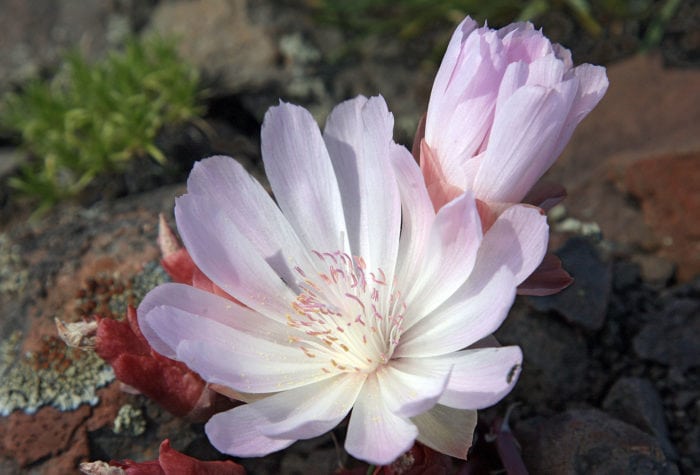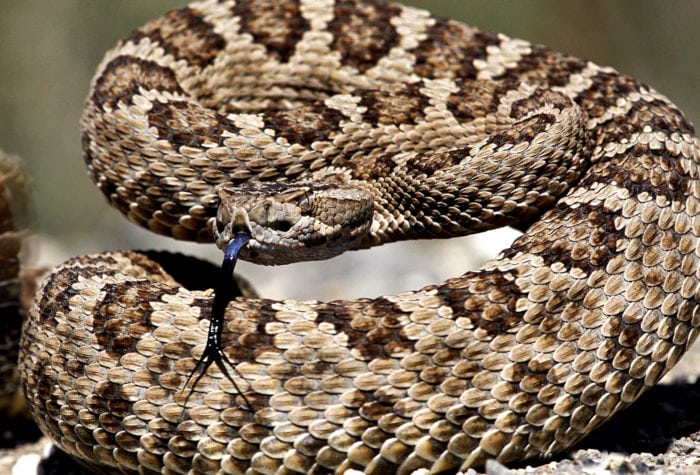John Day Fossil Beds National Monument Fence Retrofit
Steve Roelof Website
Organizer: Beth Macinko
Start Date: 10/5/2020
End Date: 10/8/2020
Region: John Day River Basin
Difficulty Rating: 4 out of 5
Maximum Group Size: 15 participants
About the place
The John Day Fossil Beds National Monument is located within the John Day River Basin and is managed by the National Park Service. The monument is split into three units totaling almost 14,000 acres. This year, volunteers will be working in the Clarno Unit.
The area around Clarno was once covered in an ancient semi-tropical jungle. 44 million years ago, volcanic mudslides covered much of the forest and left behind an amazing array of fossils in the silica hardened cliffs. In addition to over 175 plant species, animals such as four-toed horses once roamed the ancient forests. Today, the area serves as an important area for wildlife. The park service has decided to retrofit all of the boundary fences around each unit to make it easier for wildlife to travel.
About the stewardship work
Working with barbed wire fence is scratchy, hot, dusty work… and incredibly satisfying. You will remove the top and bottom strands of barbed wire from the fence and replace them with smooth wire strands. You will also change the spacing of the strands to make the bottom strand higher off the ground and the top strand lower to the ground. This makes it easier for animals to jump over the fence and to crawl under.
The work involves using hand tools to remove clips holding barbed wire to posts, rolling up the barbed wire, stretching out the smooth wire, and then replacing the clips on the posts. There is ample opportunity to choose specific tasks that match your fitness level and interest, and to switch tasks throughout the day. We take frequent breaks and encourage folks to work at a sustainable pace. No experience is necessary; we can teach all you need to know.
Trip timeline
- Monday, October 5 (4 p.m.): Volunteers will arrive by 4 p.m. to set up camp.
- Tuesday, October 6: We will plan to leave camp around 8 a.m. for a short drive to the work site. After meeting with NPS staff and a brief tutorial on fence work, we will spend the day retrofitting fence along the western boundary. Plan to be back to camp by 4 p.m.
- Wednesday, October 7: Another day of fence work. Plan to be away from camp from 8 a.m. to 4 p.m.
- Thursday, October 8: Our relaxation morning. After breakfast and coffee, those who are interested can take a hike along Pine Creek to see the recent restoration work that ONDA has done to improve beaver habitat along this important tributary to the John Day.
Camp
This trip will involve car camping at an undeveloped campsite behind a locked gate on the neighboring Pine Creek Conservation Area property. ONDA will provide a porta-potty. There will be no potable water source, but a creek is present on-site for washing water. There will be plenty of room to spread out in terms of tent sites, but we will gather in the evenings and the mornings to be able to share information about the work and for some social time. The campsite is accessible in a standard vehicle; no 4WD required.
Difficulty
Steep hiking, some heavy lifting, car camping, and tasks associated with fence work. Volunteers will be able to choose tasks that fit their ability level and there will be plenty of opportunities for pacing and sharing of work tasks during the day.
Participant responsibilities
Participants are responsible for their own food, camping gear as well as transportation to and from the trip. Sturdy off-trail ankle-high boots are required for this trip. Volunteers should be prepared to be away from camp all day each of the work days. A more complete packing list will be sent out three weeks before the trip starts.
Gear provided
ONDA will provide tools for the work, work gloves, and sunscreen. We will bring some group camping equipment (shade tent, tables for cooking, wash bins for kitchen cleanup, a privy), potable water, expert leadership, and we’ll spend time talking about restoration and conservation efforts taking place within the John Day River basin.
Registration
An ONDA registration application and medical form are required for this trip. Check the box next to each trip you would like to attend. You only need to fill this form out once per year.
Join the Waitlist
What happens next?
You will receive a confirmation email within 10 working days of submitting your form. The confirmation email will provide information regarding which trips you are on the “participant list” for, and which trips are full, and therefore you have been placed on the “waitlist.”
Six weeks before the start of the trip, the trip leader will send out an RSVP to make sure everyone is still able to participate. Based on RSVPs, open spaces will be backfilled with people from the waitlist.
Three weeks before the trip start date, registered and confirmed participants will receive driving instructions, maps, car-pooling options, and additional information in an email sent by the trip leader
If you have any questions in the meantime, please don’t hesitate to contact the trip leader.

